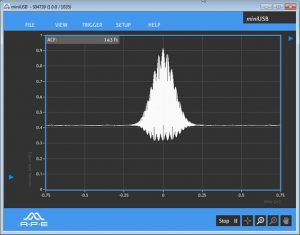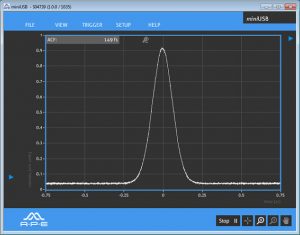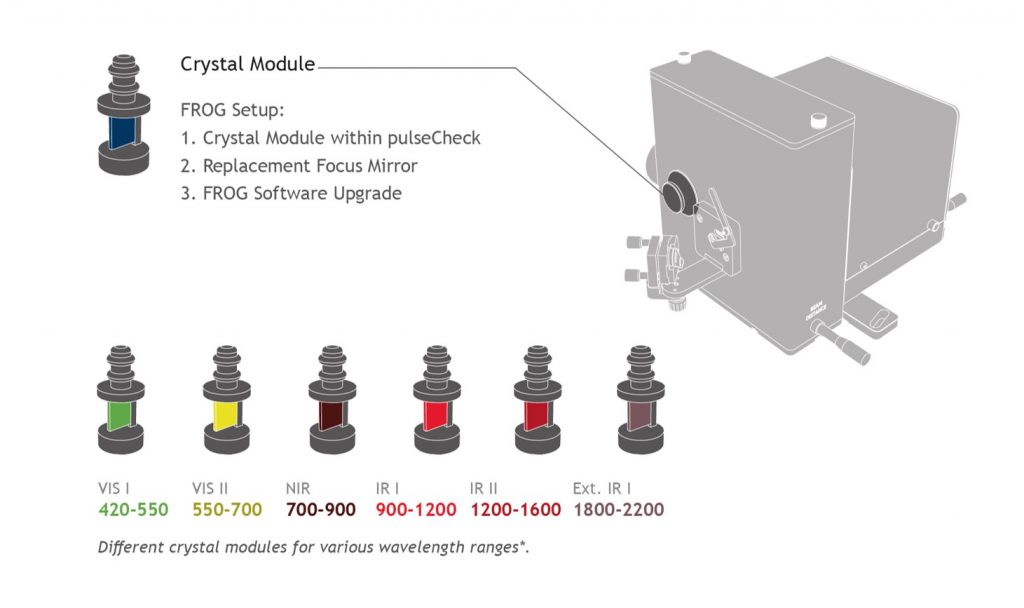From 5 fs to 500 ps
NIST Traceable Calibration
Three Types of Detectors: PMT, TPA, PD
FROG Option for pulseCheck
| 제조사 | APE-BERLIN GmbH |
|---|---|
| 가격 | TBD |
| 문의 | TBD |
Datasheets & Brochures
APE Autocorrelator pulseCheck + FROG rev.3.3.1 (pdf / english)
APE FROG Rev. 3.1.2 (pdf / english)
APE Ultrafast Laser Diagnostics rev.3.3.1 (pdf / english)
Step Files (.stp)
APE-pulseCheck-step-files-20140124 (.stp 3D CAD model with overall dimensions)
UV to IR
200 nm ... > 12 µm
APE autocorrelators are available with a variety of exchangeable optical sets. This allows sensitive pulse duration measurements over an extremely wide wavelength range. Depending on the pulseCheck configuration, wavelengths in the UV range from 200 nm to the IR range above 12 µm are covered.
From 5 fs to 500 ps
Different pulseCheck configurations can be optimized according to individual pulse width measurement requirements. Extra long pulse durations are possible, for example, with the autocorrelator pulseCheck SM, which measures long pulses over a larger scanning range using fast and highly precise stepper motor technology.
NIST Traceable Calibration
An important requirement for quality assurance systems is the traceability of a measuring instrument to international or national standards. For this reason, all APE autocorrelator models are calibrated to a traceable standard according to NIST specifications (NIST = U.S. National Institute of Standards and Technology).
Each pulseCheck comes with a printed and signed calibration certificate. The calibration can of course be renewed at our premises or by a certified partner at any time.
Three Types of Detectors: PMT, TPA, PD
The three detector types address the need for low noise and enhanced sensitivity in different applications. For pulse measurement with extreme sensitivity and low pulse energy, we recommend our photomultiplier (PMT) detector. Spectrally enhanced photodiodes (PD, TPA), on the other hand, are the ideal choice for measurements requiring sensitivities of a few mW2.
FROG Option for pulseCheck
Complete pulse characterization using FROG is possible for most pulseCheck autocorrelators. FROG allows pulseCheck to measure the spectral and temporal bandwidth and phase. FROG can be upgraded by pulseCheck customers with just a few simple changes to the autocorrelator. With the supplied software, the laser pulse intensity is displayed as a function of time and frequency (wavelength). The result is visualized in the form of the common FROG trace diagram.
Further Features
Collinear and Non-Collinear Measurements
pulseCheck offers the possibility to measure both collinear and non-collinear. It is possible to switch between both modes.

Collinear Autocorrelation
In collinearmode, interference occurs between the two pulse trains. Such an autocorrelation is also called interferometric autocorrelation or fringe-resolvedmeasurement. It is used in particular for very short pulses. The collinear mode provides additional qualitative information about the phase, the chirp and the central wavelength of the pulse.

Non-Collinear Autocorrelation
In non-collinearmode the autocorrelation becomes background-free. This type of measurement is also called intensity autocorrelation. It enables a very high dynamic range to be achieved and weak satellites or echo pulses in the wingsof the pulse can be detected.
The pulseCheck in combination with TPA Optics Sets offers a “hybrid” of the two modes: the collinear intensity autocorrelation.
Automatic Phase Matching
Phase-sensitive, nonlinear processes require phase matching for highly efficient Second Harmonic Generation. pulseCheck achieves this fully automatically for any wavelength range, resulting in precise and fast operation with no manual adjustment needed. Because they perform the task of both detector and nonlinear optics, the TPA detectors provides tuning-free operation over a wide wavelength range.
Acquisition Software and TCP/IP Standard Software Interface
All models come with an easy to use data acquisition software, allowing for real-time data display. Furthermore, the TCP/IP-based standard software interface by APE makes it straight forward to set up remote control. This allows you, for example, to design your own automated measurement routines. Simply use our protocol templates for rapid configuration with familiar programming languages, including C++, C#, LabVIEW, Python, Matlab, and Ruby.



